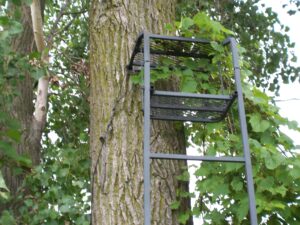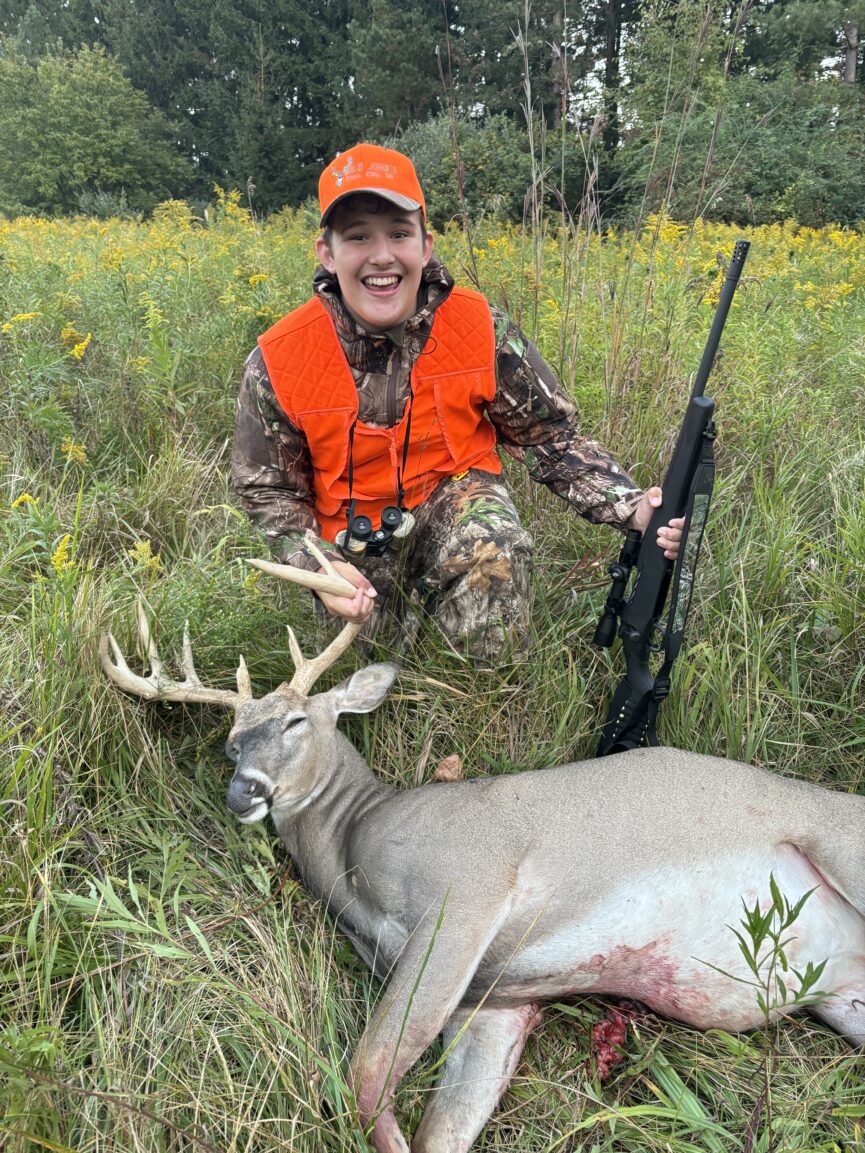When my wife Ginny and I put most of our farm into grassland programs, our focus was providing proper habitat for wild pheasants, and in so doing it worked to the benefit of all wildlife, including deer, wild turkeys, songbirds, and even butterflies and other insects. Our ground entails a mixture of warm season prairie grasses and wildflowers, with evergreen windbreaks all around the outer perimeters, and it didn’t take long for us to realize the very adaptable local whitetails absolutely love prairie grass fields which are tall enough for absolute concealment.
Yep, folks, if you want to attract deer to your property, plant a prairie grass mixture, and although it takes about 3 or 4 years to properly establish, this is a whole lot quicker than planting trees. Having primarily been a woodsy-type deer hunter, figuring out how to effectively hunt deer each fall in this mainly grassy environment has been an ongoing learning experience for me, which I really enjoy.
Typically, I’ve found being up above the ground (and tall grass) and getting a bird’s-eye view is the best way to go for stand placement, and I’m fortunate that many of our windbreak trees have finally gotten large enough to place stands in them. However, I have one special location which required something different for obtaining some elevation, and a two-person tripod tucked into the continually growing shelterbelt took care of matters.

Author prefers ladder stands because they are still connected to the ground
Preseason readiness often requires a little teamwork, not only for convenience, but also for safety. Personally, I’m not into free-hanging tree stands, and I much prefer ladder stands because they are still connected to the ground, which is supporting most of the weight. Originally, I used one-person ladder stands for my sons and me, but with grandchildren and other kids coming into the picture who must be accompanied by an adult, I’ve been going to the two-person variety whenever possible, and if hunting alone, a “robust” fellow such as myself certainly doesn’t mind the roomier space!
Putting up the typical ladder stand, in my opinion, requires at least two people, and I prefer three for additional safety. Where allowed on private property, as is my case, I often leave my ladder-stands in place all year if they are in a good hunting site, because it saves having to deal with matters, and I’ve found quality metal stands tend to be quite weather durable. However, due to annual tree growth, weather and storms, I check them well before opening day to see if they need resetting and new nylon ratchet straps. Besides annual tree growth, there is also dry rot caused by continual exposure to weather and the sun’s rays which can definitely affect the integrity of tough nylon. Due to annual tree growth, I don’t readjust matters until August when the tree-growing season has slowed to a stop.
When it comes to chains, which are more weather durable than nylon, I’ve seen annual tree growth weaken and even separate heavy duty steel links. I used to have a wooden platform which I lag-bolted between two large cottonwood trees near my pond, and it was quite sturdy. I had high hopes of even completing it into a treehouse/blind, but that all got dashed in just a couple growing season. Cottonwoods can perform some significant annual growth rates, and while the lag-bolts held firm, the boards they were holding didn’t, causing the boards to start splitting. This let me know it is a good idea to double check any “permanent” wooden hunting stands bolted or nailed into trees, no matter how well built.
Hunting blinds I do put up and take down each year are my portable and dependable (made in the Thumb) Lucky’s Ground Blinds, and I like to do this in certain spots well ahead of time to let deer readily adjust to them. Then there is my cedar “shack” blind on 6-foot legs which I soon discovered raccoons love to use as a playroom and litterbox all summer if they can gain access through a window, so making the shack “coon-proof” is an ongoing process. Wasps and hornets also like moving in and a preseason effort is always making sure I don’t have any surprises waiting for me when the sun comes up on an opening morning!
Getting prepared also includes doing some serious scouting to understand what deer are hanging around in my hunting area, and I’ll be doing this whenever possible all summer. Bucks are usually in bachelor groups throughout the summer and well into September. Sometimes there is a solitary buck out there, and these do perk up my attention because they usually have been around awhile and are a bit more moody and less social than the rest, and yep, folks, I have been keeping tabs on a couple introvert dandies.
The scouting process gives me an idea of where the deer overall are feeding regularly, and this is important when I try to pattern certain bucks (and why blinds/stands are located where they are). For me, at least, the buck-patterning process can work during the early archery season right up until the peak of the rut starts easing in, then matters can turn topsy-turvy when bucks go on the move, and some even seek different pastures in their pursuit of does. This is when knowing doe-patterns really helps, because where there are does, bucks aren’t far away.
I’ve taken some nice bucks during the peak rut which I was never aware were in the vicinity before, and I’m sure some were transients from a ways away. In farm country, such as here in the Thumb, the annual fall harvest of crops and plowing matters up, can cause a quick change in deer patterns as well.
Trail-cameras certainly aid in the scouting process and I fully appreciate what they can do and have plenty of friends who use them. However, I’m none too high-tech with certain matters and I have yet to give trail-cameras a personal whirl. I still rely on and enjoy the old school tactics of “reading deer sign” (tracks, droppings, well-worn trails, scrapes and rubs) and glassing from afar with binoculars on a regular basis. So far, it has always worked plenty fine for me.
With summer all too soon coming to an end, and the various deer seasons not far behind, I am going to be ready and waiting! Mentoring a kid during the Liberty deer hunt is always a highlight for me, and the Early Antlerless season allows harvesting a plump doe for the freezer. The archery deer season, which opens on October 1st is a treasured timeframe that I live for, not to mention all the deer hunting seasons which follow.
Personally, I feel very blessed to have so many deer hunting opportunities available in our great state of Michigan, and yep, folks, I’m already excitedly anticipating it all!
- Fickle weather during December deer hunting adventures - December 3, 2025
- Michigan’s most popular opening day – November 15th - November 23, 2025
- A missing dog found while anticipating opening day - November 23, 2025

